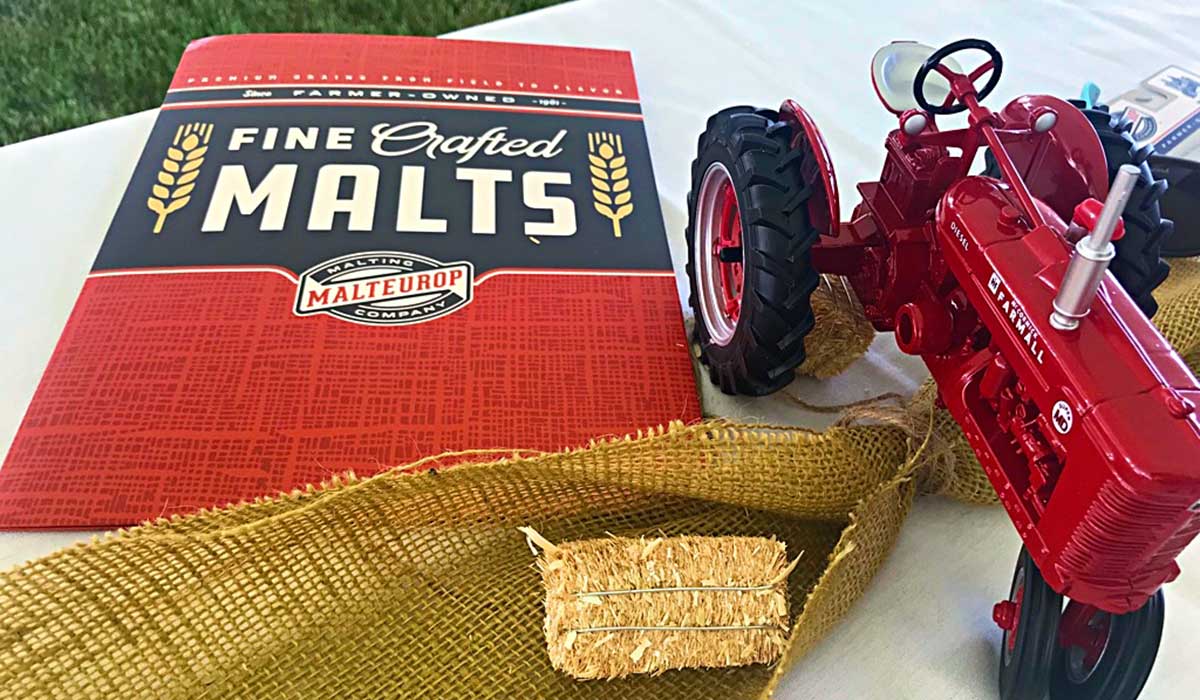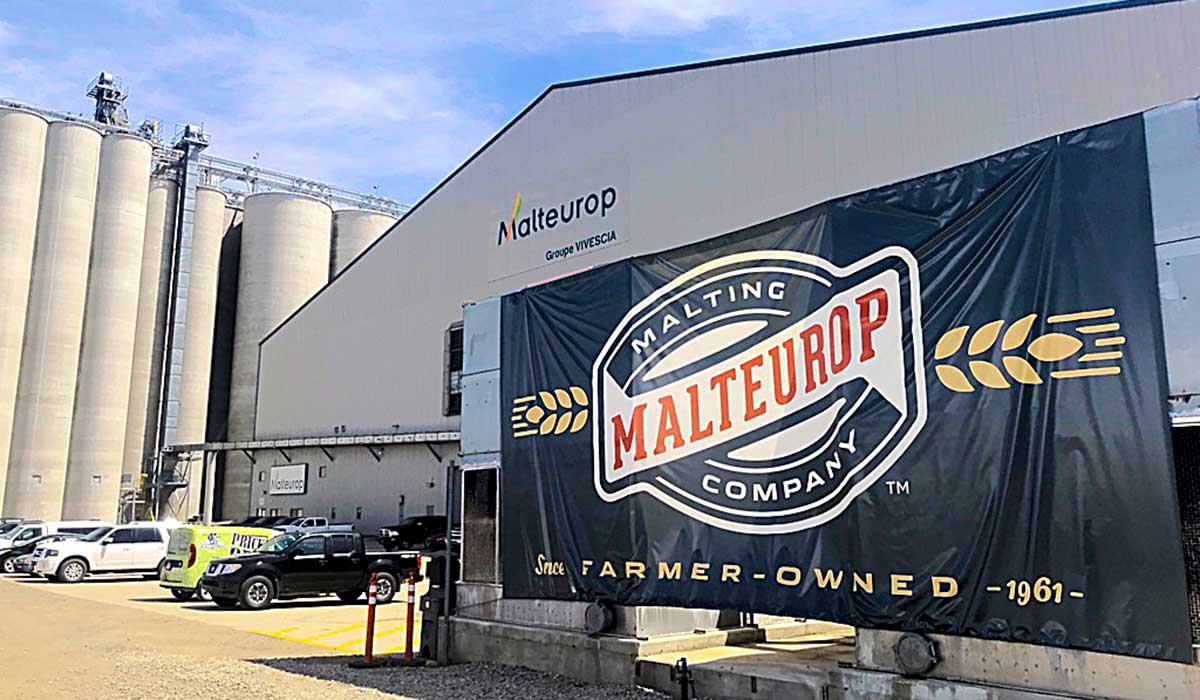Hops, yeast, and even adjuncts often create distinctive flavors that overpower the senses in the craft beer world, but at the end of the day, there is one key element at the foundation of all beer: malt. Without malt, there is no beer.
There has always been an intense focus on quality in craft beer. After all, better, more flavorful beer, is what has drawn most of us to the craft community. As this community matures, even more focus is being put upon the key ingredient that forms the basis of beer.
“I’m seeing a little bit of an increase in how malt is perceived and people are appreciating it a little bit more,” said Dustin Craft, craft sales manager for Malteurop, one of the world’s largest commercial malting companies. “I think malt is kind of the next frontier.”
Small craft malt houses have been popping up across the United States over the past decade or so, but the craft market has now grown to a point that even the bigger players that have predominately supplied macro brewers are taking notice of craft brewers as well.
Craft (isn’t his name perfect for this job?!) says Malteurop’s entry into craft malting is two-fold: to refine some of its more mainstream malts and to develop some new proprietary varieties, both of which add nuance and depth to the character of any beer style.
“[We’re working on] malts that aren’t ideal for folks that are brewing tons and tons of beer and trying to maximize every dollar, but malts designed for people who really want flavor and character and some uniqueness, but not necessarily in specialty malt,” said Craft at the 2019 Beer Now Conference in Great Falls, Montana.
“We’re kind of working on both fronts,” he said. “There are the barley varieties that can lead you to a base malt or a specialty malt with a different character. We’re also working on different ways to make specialty malts that are unlike anything else.”
While Malteurop isn’t likely to be all things malt to all brewers, it doesn’t need to be. The size of the company allows it to drive innovation in quality and variety at a larger scale, while smaller malthouses fill the gaps of the micro and nano markets.
Malteurop’s entry into the world of craft malting is likely to benefit smaller brewers like JC McDowell at Bandit Brewing in Darby, Montana, who like to source ingredients from nearby suppliers as more and more of the craft segment goes hyperlocal.
(READ: Maui Brewing Goes Off-the-Grid)
McDowell buys from Malteurop in Montana, but primarily relies upon it for base malt, as specialty malt varieties have tended to be limited or transported too far away for them to be cost-effective in the small quantities he needs.
“We do get our base two-row malt from Malteurop. It’s a Montana barley. It’s a great quality product and it’s pretty affordable,” said McDowell. “I think Malteurop is doing a good job, but definitely on the craft side, we have to have a wide variety of specialty grains.”
Like most craft brewers, Bandit keeps a certain number of flagship beers on tap, but also relies upon variety and experimentation to drive new customers and keep regulars coming back. That’s one of the tremendous upsides of a small brewhouse: there isn’t a lot of risk in developing a new recipe, even if it doesn’t go over so well.
One of the curses of that flexibility is having to source grains from numerous suppliers, as there isn’t one that meets all the needs that variety requires.
“We get (our specialty grains) from Great Western out of Washington. On the craft beer side, reality is that you don’t have a choice. You have to get Canadian, some American, German, and English grains because you can’t get that wide of a variety here, domestically, kilned,” McDowell explained. “And there’s no way you can reproduce an ESB unless you have an English grain. You just can’t get that same flavor profile.”
(VISIT: Find Breweries Near You)
That’s not likely to change to the point where all grains for any craft brewer will be supplied by one source, but that’s also a part of what keeps craft so different from macro brewers.
With a fraction of the craft world gravitating toward more timeless, balanced beers, lagers and session beers are becoming more and more popular. These are particularly the styles that would rely heavily upon quality malts to give them a flavor profile.
Like McDowell, Graham Hart, owner and head brewer of Bonsai Brewing Project in Whitefish, Montana, relies upon the quality and variety of malts available to him to produce an ever-rotating lineup of quality small-batch brews in his taproom centric brewery.
Hart relies upon Malteurop for his base malts, but sources much of his specialty grains from smaller maltsters like Farm Power Malt in Montana and Proximity Malt, a regional maltster that has a location in Colorado. The combination provides him with all the variety necessary to create unique brews that draw new customers.
“I like Malteurop’s [base] malt, it’s super clean. Ryan at Power is trying to hit niches of flavor characters that other malteries aren’t hitting. So, he’s pulled out some really neat stuff,” said Hart. “Proximity [Malt] has a lot of character to it, so that’s a lot of fun. From all the suppliers out there, I probably haven’t gone through 10 percent of [the varieties] that are available, probably. There’s a bunch of new stuff to play around with.”
But in an age when the focus on hops and adjuncts has reached a fever pitch, like many other brewers, Hart is pleased to have suppliers that not only provide variety but malts that allow him to add depth to his recipes.
“Everybody is all hops, hops, hops. Everybody is focused on the new hop, so it’s good to see these malteries coming through with just good, fresh, well cared for ingredients,” Hart added. “That’s really nice. People see the difference.”
It’s not clear if malt will ever have the same sex appeal with consumers as hops do, but there is no doubting that the renewed focus on malt isn’t going unnoticed in the brewhouse, which means better beer, spotlight or no spotlight.
Editor’s Note: You can read the full version of the original article on BeerNow.org. Authors Ken and April Pishna of “Living a Stout Life” wrote the piece after experiencing their first Beer Now Conference in Great Falls, Montana, in June 2019. Malteurop was a #BeerNow19 sponsor.
CraftBeer.com is fully dedicated to small and independent U.S. breweries. We are published by the Brewers Association, the not-for-profit trade group dedicated to promoting and protecting America’s small and independent craft brewers. Stories and opinions shared on CraftBeer.com do not imply endorsement by or positions taken by the Brewers Association or its members.


Share Post